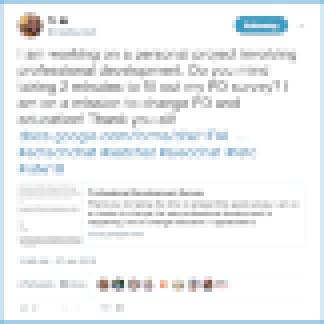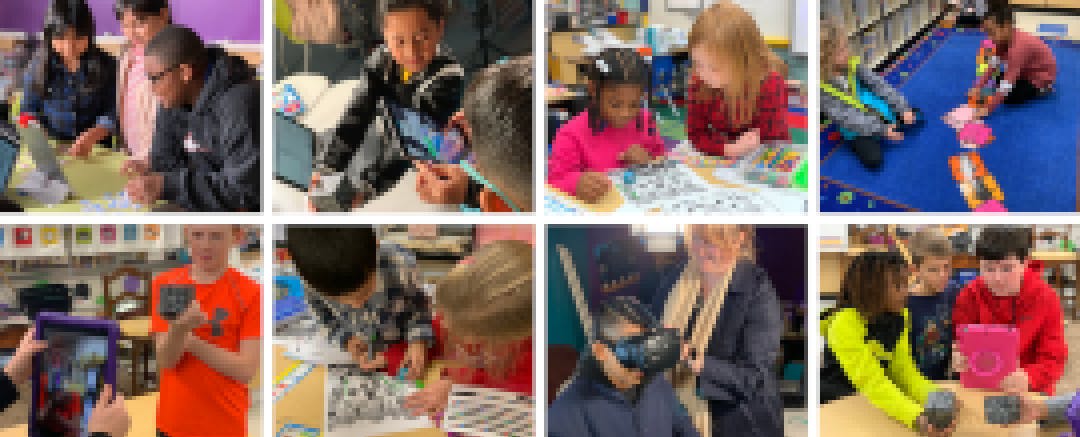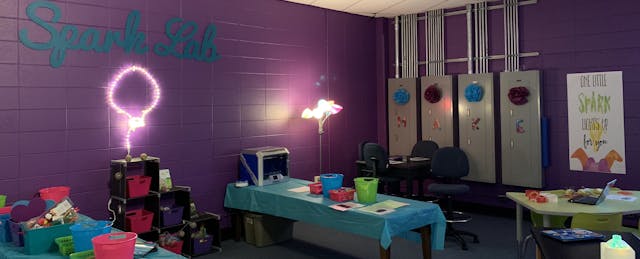In 2013, I was hired to teach computer science (CS) and video game design to students in grades K-5 at Monte Sano Elementary School in Huntsville, Ala. It was my first full-time teaching job. A year earlier, I had graduated with a teaching degree in elementary education. Though I was technology savvy, none of my classwork or student teaching prepared me for this. I wasn’t trained to teach computer science, how was I supposed to make this work?
At the time, my district didn't offer any professional development (PD) opportunities to prepare educators without a computer science background to teach CS in their classes. I started exploring online resources like Code.org and Tynker, but even those offered limited support at the time.
Five other technology teachers from my district and I were committed to designing a computer science program for elementary students, but we didn’t have a clear pathway to get there. After months of research and visiting other schools in the Pittsburgh area that were doing similar work, we created a robust elementary computer science program in which all students had a dedicated 30-45 minute period of time each week to learn about computer science, video game design, robotics, animation and more, but our path forward wasn’t without challenges. Along the way, we learned a lot about how to teach coding skills and what types of professional development opportunities effectively supported our efforts.
In 2018, the Alabama State Department of Education announced that it would be creating digital literacy standards with the goal of every student learning computer science. This sounded like a great plan, but how were teachers going to be trained to implement these standards? Fortunately, a few of my colleagues and I had developed expertise in incorporating CS into our curriculum, but what would the other teachers in our state do?
The reality was that although technology had evolved rapidly since 2013, professional development offerings for computer science teachers—especially at the elementary level—hadn’t changed much.
I became increasingly frustrated with the lack of technology support and PD opportunities in our district. We were expected to teach something that many of us had no experience in and by the way—to create personalized experiences for students. But no one was providing professional learning opportunities for us, and any attempt at training certainly wasn’t personalized.
I decided I was well-positioned to help make a change. I wanted to create a hands-on lab for teachers that focused on STEM and computer science and that provided opportunities for teachers to learn how to use new tech tools in meaningful ways with their students. I wanted to change PD in our district, but I couldn’t do it alone and I knew that in order to gain support, I needed evidence to prove this was a critical need—and the evidence needed to come from teachers.
Surveying Teachers and Sparking Interest
In January 2018, I launched a survey about professional development on Twitter, Facebook and LinkedIn and the response was overwhelming. To date, close to 3,000 educators have taken the survey.

I asked simple questions like: “When you leave PD, how excited are you to return to the classroom and implement what you just learned?” and “Would a lack of professional development offered by your district be a factor on returning next school year?” The responses were jarring. Many teachers shared that they had left their district because of a lack of PD opportunities. Over 300 teachers wrote individual comments on the survey about leaving their district to move to another one that was promoting professional growth, and those were just the teachers who were willing to share. And 94 percent of the teachers who responded, were in agreement that PD needs to be interactive, personalized, innovative, exciting and not just “sit and get.”
The comment section on the survey, and the stories I read from teachers who were also frustrated about professional development spurred me to continue this work.
Over the summer, I took a new position as an instructional technology coach for Decatur City Schools. Though I changed districts, I still wanted to build the lab. I shared the idea with Emily Elam, Decatur’s technology coordinator, and she was very supportive. We decided to invest in teachers and make this happen.
In fall 2018, for the first time, Decatur City Schools was rolling out 1:1 Chromebook initiative for grades 4-12, so having an effective professional development plan was a necessity. Thus, the Spark Lab—named after Figment, Disney’s mascot of imagination who sings the lyrics, “One little spark of inspiration, is at the heart of all creation,” was born.
The lab has two goals: to provide personalized PD and to offer teachers a space to play, create and explore many of the tools they’re expected to use with students.

Dr. Michael Douglas, superintendent of Decatur City Schools, and Elam, were both extremely supportive and helped fund the project. We found space in a middle school that was being converted into an elementary school, bought new furniture, lighting and shelving. I reached out to several vendors including zSpace, Osmos and Bee-Bots to ask for donations of products that would be useful for our teachers and received over $5,000 in donated materials.
In addition, our school system was awarded with a $27,000 grant from the Decatur City Schools Foundation supported by Rep. Terri Collins. With this grant, we were able to purchase additional materials and create a lending library of STEM tools that all teachers in the district can check out and use in their classrooms. I hand-deliver these tools to the teachers and coach them on how to make the most of the most instructional impact in their classroom. We recently found out we were awarded with an additional $15,000 from the Daniel Foundation to expand our lending library and provide virtual and augmented reality experiences for our students.
If You Build It—Will They Come?
Getting teachers to fill out a survey is one thing, but bringing them into a physical space is a whole other thing. Elam and I considered how we could intentionally build flexibility into the lab. Some teachers might want detailed, step-by-step professional development, while others might want to learn by doing and explore tools more independently. We wanted to eliminate as many barriers as possible, and truly make this lab a build-your-own professional development experience.
We decided to start with a few offerings:
- Weekly PD Sessions: There are several PD opportunities each week such as book studies, one-hour sessions, half-day sessions on coding concepts or specific tools such as Makey Makey and Seesaw.
- Full Faculty Activities: Some schools opt to bring their entire faculty to the lab for a full day of PD. Sometimes they lead this work and other times I run whole-group activities like a Breakout EDU game where teachers learn to use different STEM materials and practice innovative teaching strategies.
- Open Playground: Teachers can come on their own to explore, ask about different ways they can use specific tools or get advice about how to teach specific CS or STEM-related standards.

Technology integration doesn’t happen overnight, it takes time. But without effective, hands-on PD, no matter how much time you have, it won’t work.
Although Spark Lab is still pretty new, we’re already seeing results and that’s because our teachers are eager to learn and they’re showing up. The Spark Lab has served about 350 teachers since it opened a little over four months ago. And, by exposing teachers to different technology integration possibilities, carving out time and space for them to ask questions and get advice and offering flexibility around what to learn and how to learn it, we’ve seen a big change in classroom instruction.
Dr. Douglas has noticed the change. “All systems talk about STEM, but we fail to provide our teachers with the necessary professional development,” he explains. “The Spark Lab has given our teachers the ability to explore, test and practice the implementation of high quality STEM education.”

Teachers also see the benefits. Lori Ashbaugh, an ESL teacher at Oak Park Elementary, where the Spark Lab is housed, recently shared that technology has always been an area where she felt she needed to learn and improve, and that having the Spark Lab at her school has helped her learn about new ideas and tools that she never even knew existed.

Ashbaugh has been using the Bee-Bot to support her ESL students. In grades 3-5, she uses the little robots to work on story sequencing, placing pictures from stories on the path mat and having students program the robot to follow the sequence of events in the story. With her younger learners in grades K-2, she’s using the Bee-Bot to practice number and letter recognition and order, and Ashbaugh says even her Kindergarteners are able to grasp the concept of programming the robots to find the correct letters or numbers. “These students may not have language,” she explains, “but they are able to pick up the technology and begin language acquisition very quickly.”
The Spark Lab is a continuous work in progress. Technology changes fast, and I know that for the lab to remain effective, we must continue to build relationships with teachers, help them realize the need for innovation in the classroom and continue to support them to reach each and every student.


